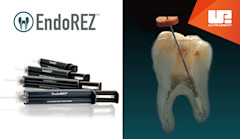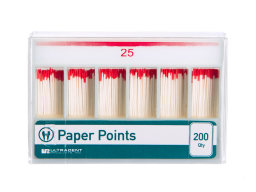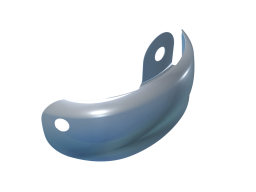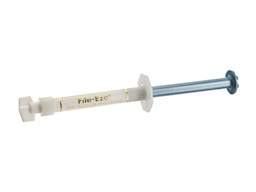Free Standard Shipping on All Orders $285+
Instructions for Use (IFU)
Safety Data Sheets (SDS)
Product Allergens
See any common allergens this product may contain >>Price breaks are offered on most items...
This amount is an estimate based on retail price. The actual amount due (shown at the final stages of your order) may be different from what is displayed here.
Return Policy
Items returned within 30 days of purchase with a return authorization number on the outside and inside of the return box will be credited 100%. Product returned between 31 and 60 days from purchase date is subject to a 20% restocking fee. Ultradent will not accept returns after 60 days. Errors in shipment must be reported within 14 days of invoice date. All return authorization numbers become invalid 90 days after date of issue. A return authorization number must accompany all returns to receive proper credit. Please contact Customer Service at 800.552.5512 for assistance.
Limited Warranty
EndoREZ canal sealer minimizes the amount of chair time required for obturation. This thixotropic material has an affinity for the moisture found deep in dentinal tubules and lateral canals1 and provides a complete, thorough seal.2 Since methacrylate-based EndoREZ canal sealer relies on chemistry rather than heat or pressure to fill the canal, the risk of additional root trauma/fracture is greatly reduced. Additionally, EndoREZ canal sealer is versatile enough to be used as the sealer with any obturation method, including master cone, lateral condensation, or warm gutta percha. Create a “monobloc” by using EndoREZ™ resin-coated gutta percha points.
- The world’s first hydrophilic and self-priming resin sealer
- More effective obturation in less time
- Provides a complete, thorough seal2
- Has the same radiopacity as gutta percha
- Bonds to resin-based core/composite materials
- Retreatable when combined with gutta percha3
- Provides syringe delivery to the apical third
- For EndoREZ™ kit, use Ultradent™ Mixing tips.
- Certified gluten free















Technical Details
Time-Saving Ability
Moisture Affinity
Ultimate Adaptability
Chemical Obturation
Bonds to Resin-Coated Gutta Percha
A Decade of Success
Clinicals
Penetrates Into Tubules Like No Other Sealer
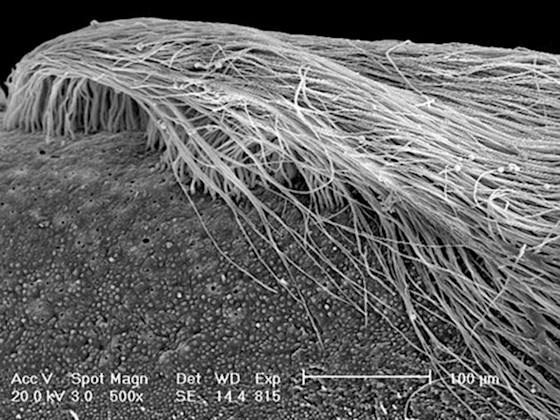
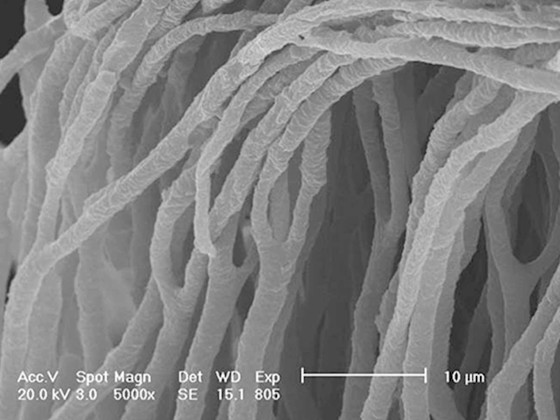
EndoREZ canal sealer penetrates into tubules and adapts to the walls.
Radiopaque Results
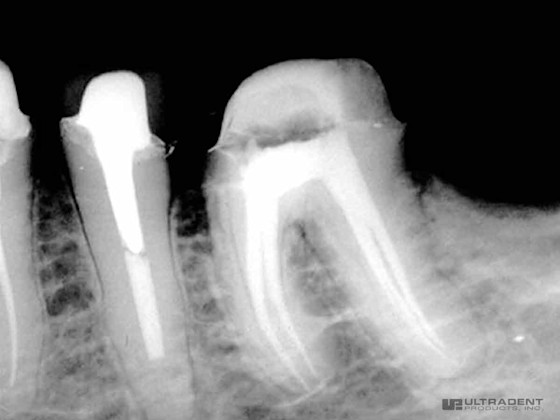
Improved Flowability
The improved flowability of EndoREZ canal sealer allows the sealer to reach the isthmus and intercanal areas during the obturation procedure, without using any special device.
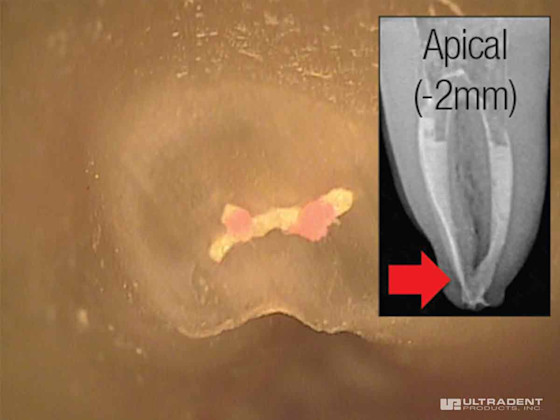
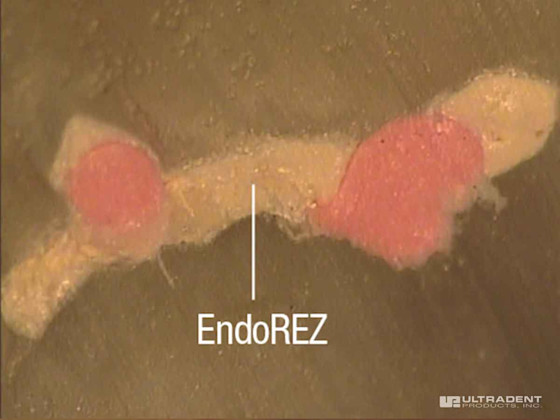
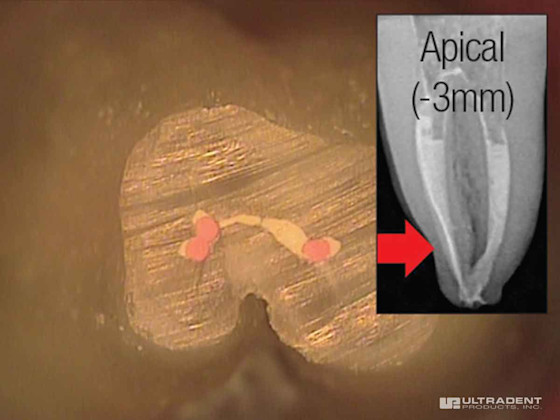
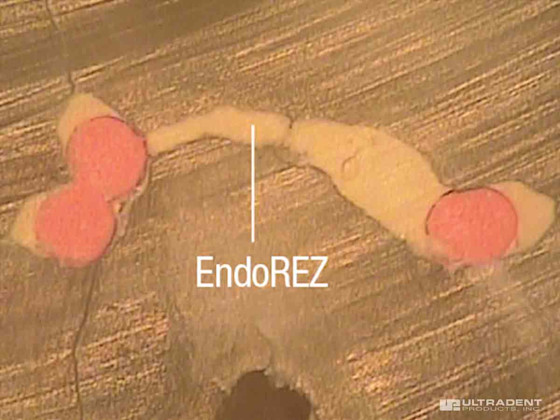
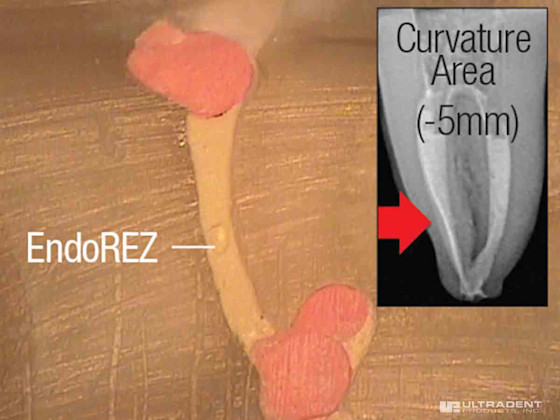

Ultradent's patented NaviTip™ tip delivers EndoREZ canal sealer into the entire anatomy of the canal in one step.
Procedures
EndoREZ Step by Step
See Instructions for Use for complete instructions, warnings, and precautions.
Step 1

Step 2
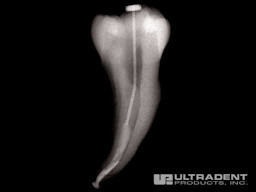
Step 3
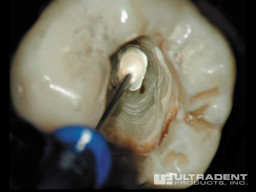
Step 4
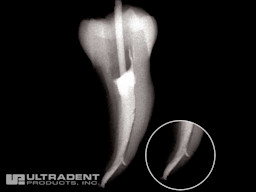
Frequently Asked Questions
-
Is EndoREZ canal sealer re-treatable?
EndoREZ canal sealer is re-treatable. It sets harder than ZOE—more like a hard ZOE (e.g., ZOE B&T)—but not as hard as other resin fillers or restoratives. Begin by making a channel with gates-glidden drills following the gutta percha. Remove the remaining EndoREZ canal sealer with files. There is no chemical solvent for EndoREZ canal sealer. -
Can EndoREZ canal sealer be used by itself? With other obturating techniques?
EndoREZ canal sealer is FDA accepted as a filler as well as a sealer. So, while it can be used alone, we recommend using at least a single cone. This gives an apical plug as well as a guide for post preparation. It may also be used with other filling techniques as a sealer in place of whatever sealer you are currently using. Its hydrophilic nature, biocompatibility, radiopacity, and superior flow characteristics will only enhance the seal of any system it is used with. -
Can a tetrachloroethylene softening solution solution such as Endosolv be used to remove residual EndoREZ canal sealer?
No, softening solutions will not dissolve EndoREZ canal sealer. -
How do I perform a post prep on the same visit when the canal is obturated with EndoREZ canal sealer?
EndoREZ canal sealer takes 30–45 minutes to set up in the mouth and up to an hour to set hard. It does, however, have high oxygen inhibition. This means that it will set more slowly when exposed to air.
In order to do a post prep the same visit, apply Ultradent’s DeOx™ oxygen barrier solution to the exposed EndoREZ canal sealer, remove the rubber dam, and have the patient bite on a cotton roll. Check the fill every 15 minutes with an explorer. When the material tests hard, the post prep may proceed.
Begin the post channel with gates-glidden drills, using the single gutta percha as a guide. Use post drills to enlarge the post prep as usual. -
The instructions describe the use of EndoREZ canal sealer in cases with normal apical anatomy. Can EndoREZ canal sealer be used in teeth with funnel shaped or open apices? If it is possible, what are the necessary modifications to the technique?
Should you encounter a large open apex, EndoREZ canal sealer can be used for obturation in the following manner: Fit a cone of gutta percha into the canal for tug back, then apply a small amount of EndoREZ canal sealer to the apical portion of the canal. Insert the gutta percha. Now mix the EndoREZ canal sealer and deliver it into the canal through a NaviTip tip that is slipped alongside the gutta percha in the canal. Fill the canal as usual from the bottom up to avoid entrapment of air. -
EndoREZ canal sealer sets moderately hard inside the canal. Is there any solvent that can soften the set resin in the canal?
EndoREZ canal sealer is easily removed using a gates-glidden drill or ProTaper endo removal files to gain access, followed by regular files. There are no solvents to dissolve it should a re-treatment be necessary. -
How do the sealing ability and shrinkage rate of EndoREZ canal sealer compare to those of gutta percha?
EndoREZ can sealer performs favorably. If using hot gutta percha, it is important to remember that gutta percha shrinks about 6–7% as it cools. Even with cold gutta percha and “lateral condensation,” there are numerous gaps, since it has historically been used with hydrophobic sealing materials.
To reduce or prevent gaps in the middle third with wide canal spaces, we recommend inserting additional gutta percha but not to condense laterally. -
If resins shrink upon polymerization, how can a resin-based obturation material seal effectively?
Remember that all resin materials should not be lumped together into one category. Why? All resin-based sealers prior to EndoREZ canal sealer were/are hydrophobic. The hydrophilic property of EndoREZ canal sealer contributes a very important difference. EndoREZ canal sealer contains a special hydrophilic organophosphate methacrylate monomer that increases its hydrophilicity and produces a resin with a strong affinity for moisture with resin penetration of 1000 µm into tubules.4
When using EndoREZ canal sealer, researchers have seen unsurpassed adaptation and seal in the apical region and no shrinkage was observed there. Why? With gutta percha fit with tug-back, the dimensions of resin in the apical portion are minimal. Using the NaviTip tip to deliver EndoREZ canal sealer to the apex adds significantly to the predictability of this apical seal.
Even up in the broader sections of the canal in the middle third, shrinkage gaps are minimal and less than what would be seen with lateral condensation with gutta percha. Since the tubules are filled to 1000µm, even adjacent to such a gap, bacteria in the tubules are entombed in the set resin and the apical portion is sealed.
Having hydrophilic properties is a step forward for sealing potential for a few reasons:- The capability to infiltrate and seal dentin tubules that have been treated with EDTA (of File Eze or any other) and sodium hypochlorite.
- The low contact angle at which a hydrophilic material approaches even moist dentin. This improves the capability to adapt into tiny irregularities and even into accessory canals.
-
After cleaning and disinfecting, the root canal still contains a smear layer. How is it possible that the EndoREZ canal sealer penetrates the tubules?
Cleaning with EDTA (File-Eze™ EDTA lubricant) followed by disinfecting with sodium hypochlorite, (ChlorCid™ sodium hypochlorite solution) not only removes all the smear, but also much or all of the decalcified collagen. EDTA can be used as a conditioning agent for dentin bonding. It doesn't function in the acid sense, but chelated as a base. Sodium hypochlorite removes the decalcified collagen making an even better surface for hydrophilic resin adhesion and sealing. Such is not used for restorative dentistry because it takes many minutes to be effective and it could be damaging to surrounding soft tissues.
Research & Studies
Significance of moist root canal dentin with the use of methacrylate-based endodontic sealers: an in vitro coronal dye leakage study.
Zmener O, Pameijer CH, Serrano SA, Vidueira M, Macchi RL. Significance of moist root canal dentin with the use of methacrylate-based endodontic sealers: an in vitro coronal dye leakage study. J Endod. 2008;34(1):76-9.
http://www.ncbi.nlm.nih.gov/pubmed/18155498 – Zmener O, Pameijer CH, Serrano SA, Vidueira M, Macchi RL.Clinical and radiographic evaluation of a resin-based root canal sealer: an eight-year update.
Zmener O, Pameijer CH. Clinical and radiographic evaluation of a resin-based root canal sealer: an eight-year update. J Endod. 2010;36(8):1311-4.
http://www.ncbi.nlm.nih.gov/pubmed/20647086 – Zmener O, Pameijer CH.Effect of new obturating materials on vertical root fracture resistance of endodontically treated teeth.
Hammad M, Qualtrough A, Silikas N. Effect of new obturating materials on vertical root fracture resistance of endodontically treated teeth. J Endod. 2007;33(6):732-6. Epub 2007 Apr 16.
http://www.ncbi.nlm.nih.gov/pubmed/17509416 – Hammad M, Qualtrough A, Silikas N.Antibacterial Activity of Endodontic Sealers by Modified Direct Contact Test Against Enterococcus faecalis
https://assets.ctfassets.net/wfptrcrbtkd0/6nJ0C77dj5III611cEh0BD/25a0eb38e2ac8c107a2d01a2af919701/Antibacterial_Activity_of_Endodontic_Sealers_by_Modified.pdf – Hui Zhang, DDS, PhD, Ya Shen, DDS, PhD, N. Dorin Ruse, PhD, and Markus Haapasalo, DDS, PhDApical Quality and Adaptation of Resilon, EndoREZ, and Guttaflow Root Canal Fillings in Combination with a Noncompaction Technique
https://assets.ctfassets.net/wfptrcrbtkd0/3aECtN81is3nBcyjrOQoun/734033493734e754b69a2e1be1315168/Apical_quality_and_adaption_of_resilon__EndoRez___resultados_positivos_.pdf – Josef Herbert, DDS, MS, Michael Bruder, DDS, MS, Jürgen Braunsteiner, DDS, MS, Markus Jörg Altenburger, DDS, and Karl-Thomas Wrbas, DDS, Priv.-DozBone Tissue Response to a Methacrylate-Based Endodontic Sealer: A Histological and Histometric Study
https://assets.ctfassets.net/wfptrcrbtkd0/33bUlTaq5nc3yU7sHbotTX/79debd01ee547a289e7b3f5f5ca2d3c0/Bone_Tissue_Response_to_a_MethacrylateBased.pdf – Osvaldo Zmener, DDS, Dr. Odont, Gladys Banegas, DDS, Cornelis H. Pameijer D, MD, MScD DSc, PhDClinical and Radiographic Evaluation of a Resin-based Root Canal Sealer: An Eight-year Update
https://assets.ctfassets.net/wfptrcrbtkd0/4wPBI83Vr4ORkBvIWOyMI3/d9c7e0ba96275e6402e43c743f99123c/Clinical_and_Radiographic_Evaluation_of_a_Resin-based_Root.pdf – Osvaldo Zmener, DDS, Dr Odont, and Cornelis H. Pameijer, DMD, MScD, DSc, PhDClinical and Radiographical Evaluation of a Resin-based Root Canal Sealer: A 5-Year Follow-up
https://assets.ctfassets.net/wfptrcrbtkd0/6TLnOdrHd0oLg5FgHQjVlz/7b067d1f706847b879d6f7924e452b37/Clinical_and_Radiographical_Evaluation_of_a_Resinbased_5_years.pdf – Osvaldo Zmener, DDS, Dr Odont, and Cornelis H. Pameijer, DMD, DSc, PhDEffect of New Obturating Materials on Vertical Root Fracture Resistance of Endodontically Treated Teeth
https://assets.ctfassets.net/wfptrcrbtkd0/voS2CgtcFco5YMk2PlA2J/a5fb5ab13a1bfe5efbc1f141eba55d94/Effect_of_New_Obturating_Materials_on_Vertical_Root.pdf – Mohammad Hammad, MSc, Alison Qualtrough, PhD, and Nick Silikas, PhDSimplifying endodontics: a single cone obturation technique using EndoREZ
Dr. Carlos A. S. Ramos discusses his technique for an effective seal
https://assets.ctfassets.net/wfptrcrbtkd0/hdfIBNQJNW8oq40VIOM5E/57846d6f9a05d5a921df31a980e34aa1/EI-Ramos.pdf – Dr. Carlos A. S. Ramos
